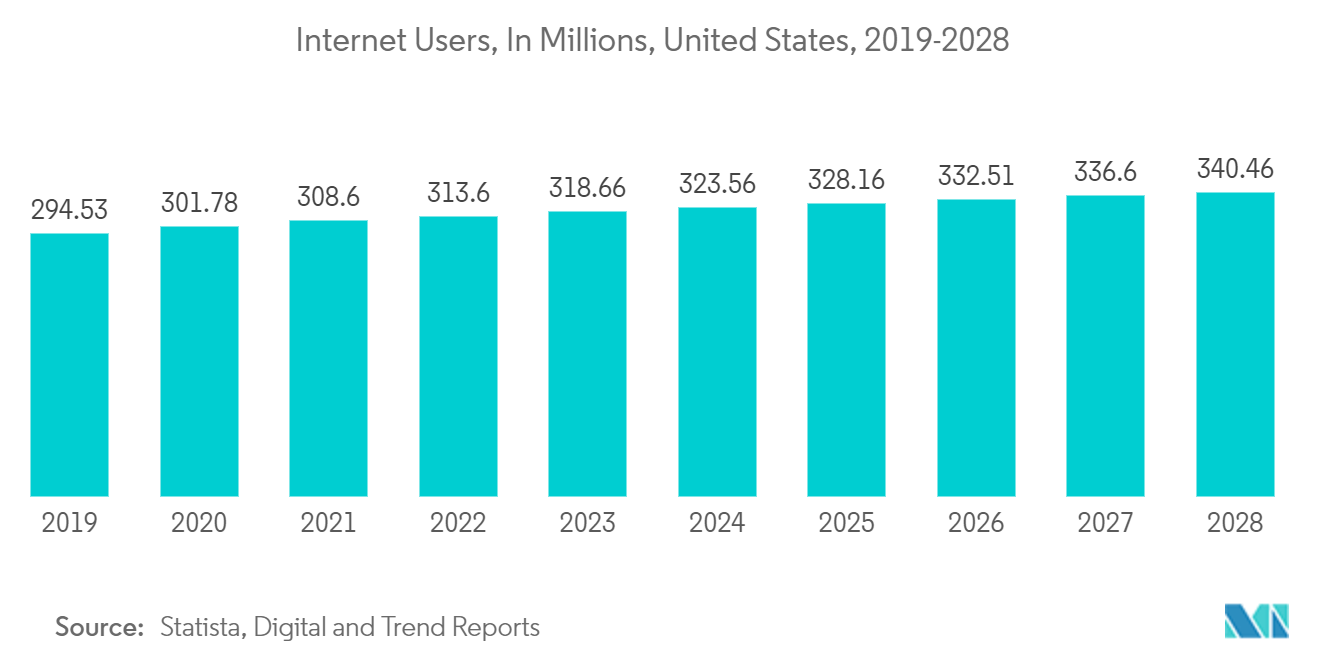Market Trends of United States Data Center Storage Industry
IT and Telecommunication Segment Holds the Major Share
- The COVID-19 pandemic impacted the economic effects of early entrants on digital transformation as they began offering digital products and services and using digital processes more than their competitors engaged in digital transformation.
- Among US corporate infrastructure decision-makers, 94% have at least one cloud deployment, with hybrid or multi-cloud solutions more common. Nearly 74% of US infrastructure decision-makers say their organizations are adopting containers as a platform as a service (PaaS) in on-premises or public cloud environments. Clouds are expected to increase significantly.
- US cloud providers include AWS, Microsoft, and Google. Among enterprise infrastructure decision-makers who use at least one type of cloud deployment, 94% use at least one type of cloud deployment, with the majority being hybrid or multi-cloud.
- In the United States, cloud storage is growing due to the growing demand for cost-effective data backup, storage, and backup in every business and the need to manage the data generated by the increasing use of mobile phones.
- With the rise of the digital economy and increased internet usage in the United States, the need for data storage and processing has increased. The proliferation of hybrid cloud service providers has increased demand for colocation services and increased rack utilization.
- The number of IoT devices utilizing network connections from telecommunication providers is likely to generate huge amounts of data. For instance, connected consumer device unit shipments in the United States were projected to reach more than 800 million units by 2023. By 2025, IoT connections in the United States are projected to grow to more than 4 billion. In the United States, the average monthly mobile data speed is projected to reach 534 Mbps in 2029 through 5G service. Such instances in the market are expected to create more need for data centers, resulting in rising demand for data center storage solutions in the coming years.

Hybrid Storage is Expected to Hold a Significant Market Share
- The combination of on-premises and cloud storage solutions is called hybrid storage in data centers. This approach leverages the strengths of both environments, offering the flexibility to store and manage data on-site and in the cloud.
- The United States is a hub of technological innovation, and there is widespread adoption of advanced technologies, such as AI, machine learning, and analytics. Hybrid storage infrastructure is needed for these technologies to be integrated and supported smoothly.
- The ability to adapt and innovate is vital in a competitive business environment. By providing a robust, cost-efficient, and technically advanced storage solution, hybrid storage-type DC facilities improve the competitiveness of businesses in the United States.
- Furthermore, with the advent of 5G and the increasing use of smartphones, we need to ensure adequate speed availability. As a result, the country has adopted cloud computing, increased the number of Internet users, and adopted fiber optic technology. With the introduction of such technologies and the increase in data usage, the use of hybrid storage data centers is increasing in the country.
- In 2023, around 92% of the US population was an internet user, up from approximately 75% in 2012. The United States is one of the world's largest online markets, with approximately 299 million internet users in the country in 2022. Such market improvements propel data centers' growth and contribute to segmental growth.
- The key players in the market focus on improving the data center storage solutions to meet the market demand. In July 2023, Hitachi Vantara, a prominent infrastructure, data management, and digital solutions subsidiary of Hitachi Ltd, announced its collaboration with Microsoft to launch the Hitachi Unified Compute Platform (UCP) for Azure Stack HCI. The streamlined and powerful hybrid cloud solution increases business flexibility and delivers enhanced cloud management across various environments, including data centers, branch offices, and edge computing, to give businesses greater visibility and control over how their data is stored, managed, and used.


